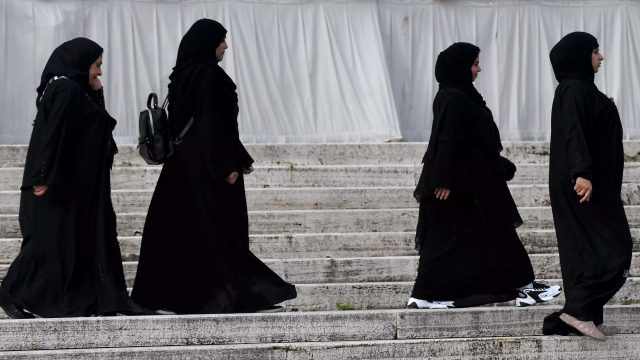France’s Ban on Abayas in State Schools
The French government’s decision to ban children from wearing abayas, the full-length robes worn by some Muslim women, in state-run schools has garnered both support and criticism. The ban is part of France’s strict secularism policy, “laicite,” which has been a sensitive and politically tense topic in the country.
While the move was welcomed by the right-wing Les Republicains party and the SNPDEN-UNSA union of school principals, it was criticized by left-wing politicians and academics who argued that it could lead to the stigmatization of Muslims and profiling of students based on their identity. Some argued that the abaya is worn for fashion or identity reasons rather than religious ones, and the ban could hurt Muslims who will feel stigmatized. The ban follows previous restrictions on religious attire in France, including the banning of headscarves in schools in 2004 and full face veils in public in 2010.
How does the ban on abayas in French state schools reflect the country’s approach to secularism?
The ban on abayas in state schools reflects France’s strict approach to secularism, known as “laicite,” which aims to maintain a clear separation between religion and the state. This approach has led to previous bans on religious symbols and attire in public spaces and has been a subject of political tension and debate in the country.
What are the potential consequences of the ban for Muslim students and the broader Muslim community in France?
The ban could lead to the stigmatization of Muslim students and the broader Muslim community in France, as it may be perceived as an “obsessional rejection of Muslims,” as noted by Clementine Autain, an MP for the hard-left France Insoumise. It could also lead to profiling of students based on their identity, as it may be challenging to differentiate between fashion and religion. The ban may also trigger the creation of more private Muslim schools, as noted by sociologist Agnes De Feo.
What are the arguments for and against the ban?
Arguments for the ban include the need to uphold France’s strict secularism policy and to address perceived breaches of “laicite” in schools, as noted by Education Minister Gabriel Attal. Supporters argue that the ban provides clarity on the issue of religious attire in schools. Arguments against the ban include the potential stigmatization of Muslims, the difficulty in differentiating between fashion and religion, and the potential for profiling students based on their identity. Critics argue that the abaya is worn for fashion or identity reasons rather than religious ones and that the ban could be counterproductive.
How does the ban on abayas compare to previous bans on religious attire in France?
The ban on abayas is consistent with previous bans on religious attire in France, including the banning of headscarves in schools in 2004 and full face veils in public in 2010. All these bans reflect France’s strict approach to secularism and its efforts to maintain a clear separation between religion and the state.
How might the ban affect the relationship between the French government and the Muslim community?
The ban could further strain the relationship between the French government and the Muslim community, as it may be perceived as another example of the government targeting Muslims and their religious practices. It could lead to feelings of marginalization and stigmatization among Muslims and may result in the creation of more private Muslim schools.
Month: Current Affairs - August, 2023
Category: International / World Current Affairs


